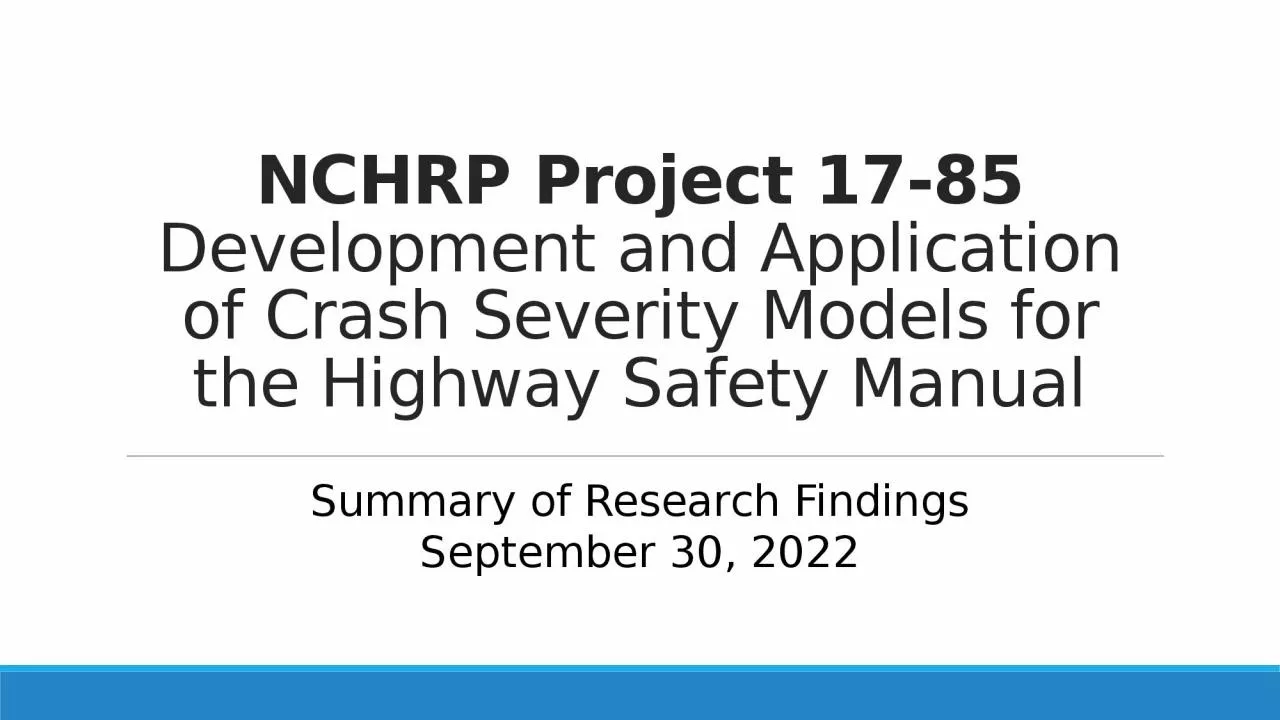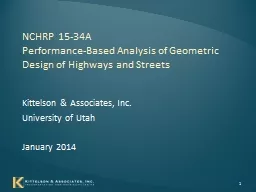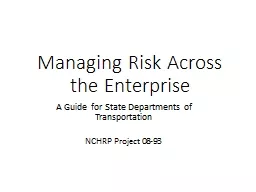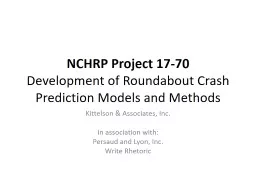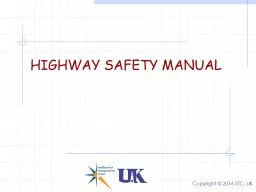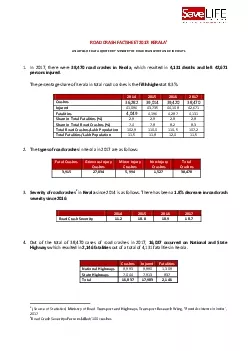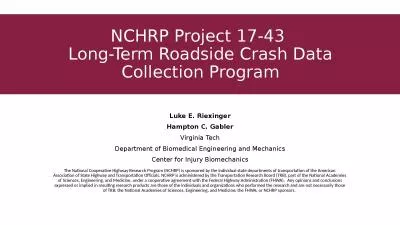PPT-NCHRP Project 17-85 Development and Application of Crash Severity Models for the Highway
Author : daniella | Published Date : 2023-06-21
Summary of Research Findings September 30 2022 2 Presentation Outline 3 Project Objectives From RFP Distinctive Feature of New Methodologies 4 5 Method 1 Negative
Presentation Embed Code
Download Presentation
Download Presentation The PPT/PDF document "NCHRP Project 17-85 Development and Appl..." is the property of its rightful owner. Permission is granted to download and print the materials on this website for personal, non-commercial use only, and to display it on your personal computer provided you do not modify the materials and that you retain all copyright notices contained in the materials. By downloading content from our website, you accept the terms of this agreement.
NCHRP Project 17-85 Development and Application of Crash Severity Models for the Highway: Transcript
Download Rules Of Document
"NCHRP Project 17-85 Development and Application of Crash Severity Models for the Highway"The content belongs to its owner. You may download and print it for personal use, without modification, and keep all copyright notices. By downloading, you agree to these terms.
Related Documents

